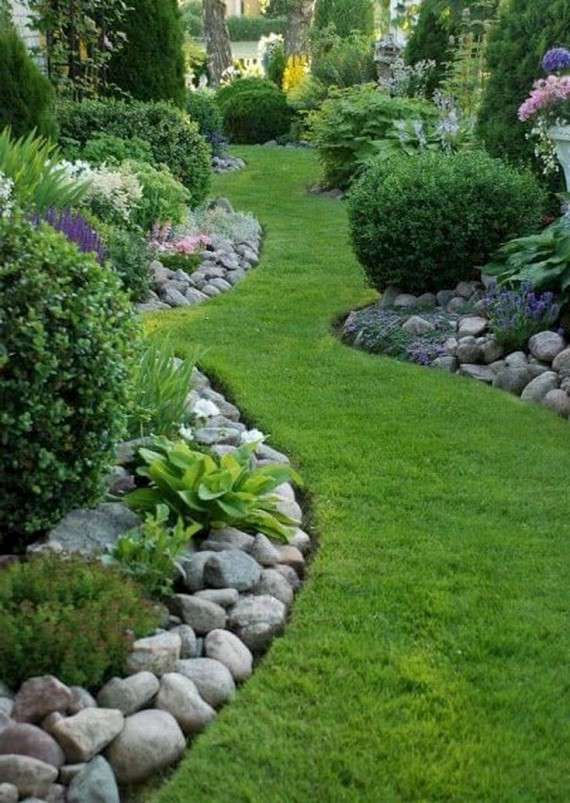
7 Ways to Create Low Maintenance Garden Borders
Today’s best gardens are more like those 100 years ago. That’s because gardeners have returned to use more perennials and native plants. This makes the garden more drought resistant. It also reduces how much work you need to put into your garden to keep it looking good.
1. Monkey Grass and Other Perennials
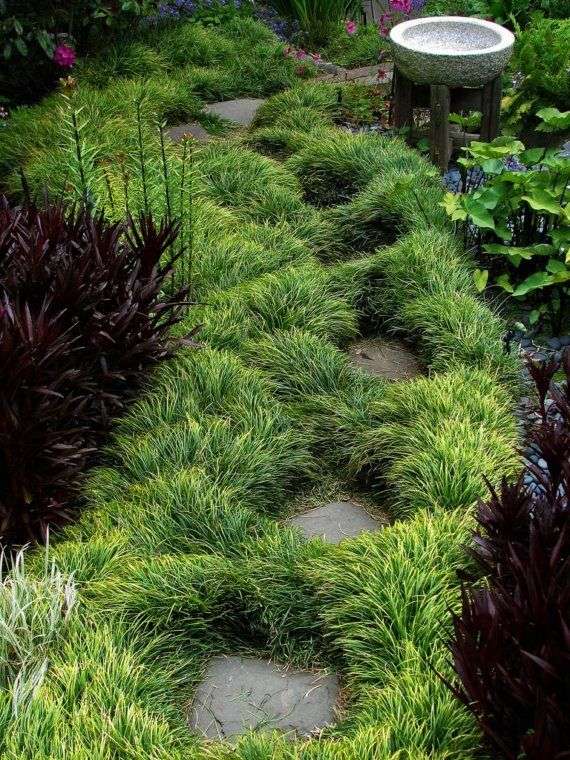
Source: Pinterest
Monkey grass, known to many gardeners as Lirope, is a low maintenance border. It is a mounding plant of either dark green or variegated. The flowerlike stalks are purple or white. Lirope should be planted about a foot apart to allow for the spread. The only real maintenance after that is to make sure it establishes. This may mean watering it in a drought. The only time it needs to be pruned is early spring when it can simply be mowed short. This will allow new growth to emerge with a fresher greener look.
If you want a similar plant that doesn’t look so much like grass, Persicaria is a perennial that grows quickly if planted in the spring. The green plant doesn’t mound up as high as lirope. It also has pretty flowers that form as spires. These start out pink and darken over time.
2. Rocks

Source: Pinterest
Rocks are a natural border that looks good and requires zero upkeep once put in place. You can go for a whole rock look and add bigger rocks to create a rock garden. You’ll want to utilize perennials that will come back year after year. Your only job will be occasionally weeding and some watering during summer drought extremes. To move a large boulder into your rock garden as a major feature, you’ll need to hire a contractor with a bulldozer. Be sure to require them to put down road mats to protect your grass. Crane mats prevent trucks and construction equipment from tearing up your turf.
3. Bulbs
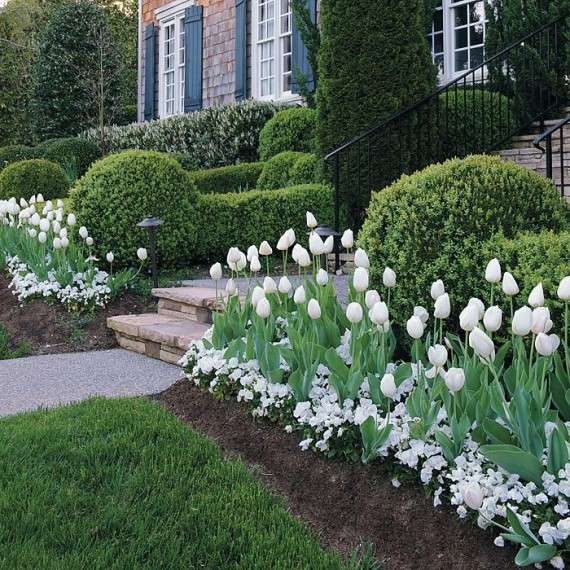
Source: Pinterest
If you want to create a beautiful border around a garden, you can plant bulbs in the fall and leave a mulched border around the existing plants. You’ll want about 1- to 2-feet of space as a perimeter. When the bulbs come in the spring, they will create a gorgeous border. A wide variety of flower bulbs will keep it blooming longer.
4. Flower Pots
You can purchase durable floor pots in a variety of colors (or just one) and make your border from these. Once they are filled with dirt, they will stay in place until you move them. Don’t get huge pots because, once filled, they will be difficult to move. You can put annuals in your flower pots and use perennials in your garden. That way you can have the best of both.
5. Walkways
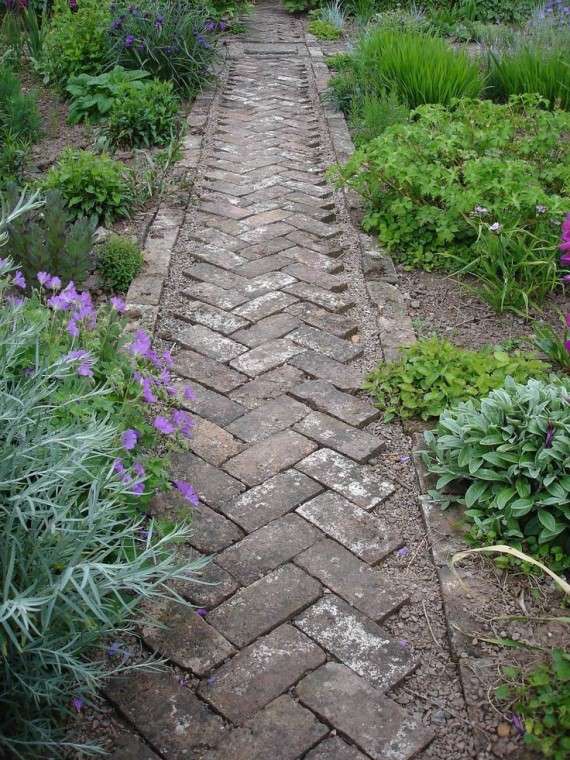
Source: Pinterest
If you want to form a border between your garden and your grass, you put down walkways of tile, old brick, or wood. The goal should be to create walkways that won’t need any upkeep, but will keep the grass out of your garden.
Gravel can be used, but if you want to keep it low maintenance, you’ll need a weed suppressing layer underneath it. It’s not a good pick if children will frequent your yard. Kids just can’t help playing with the rocks.
6. Shrubs
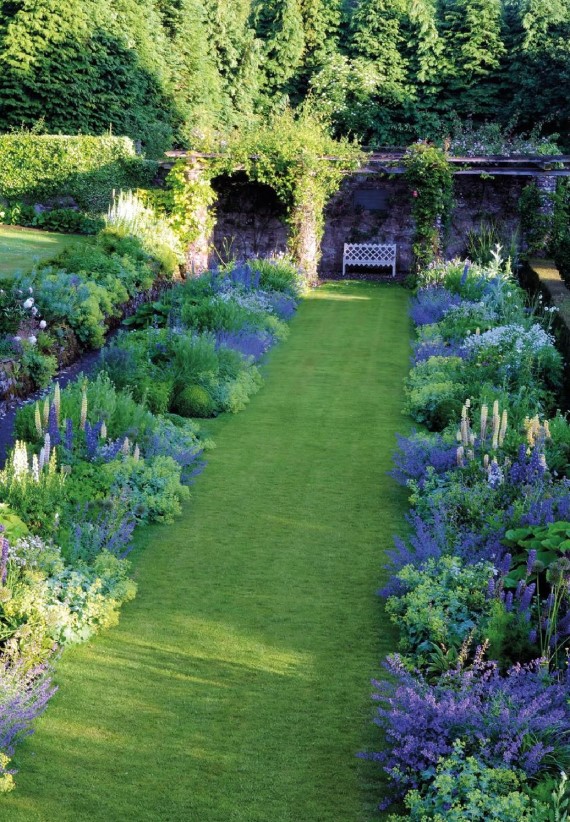
Source: Pinterest
If you choose to line your garden with shrubs, choose varieties that stay small and/or ones that stay green. Holly is high maintenance, but you can go for something easier like lavender, euonymus or daphne. If you are looking at shrubs, be sure to read how much water they need, how tall they grow, and how wide they will grow. You don’t want something that will get too tall or too scraggly. That will mean too much upkeep. Then when you plant, make sure you leave plenty of room for them to spread out. You may want to plant a perennial ground cover around them to fill the space until the shrubs become large enough.
7. Raised Beds
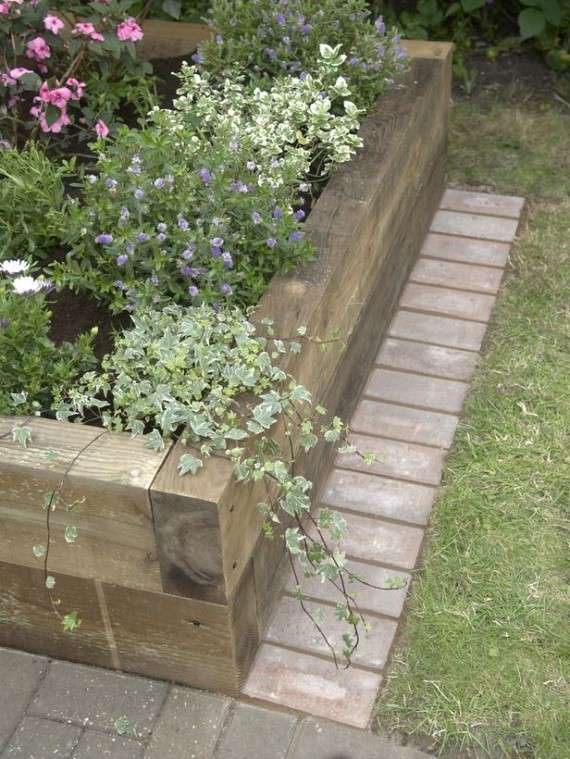
Source: Pinterest
The benefits of raised beds is the built in border between the garden and the yard. It is also easier to tend raised beds without bending as much. You’ll need to leave room between these to allow you to access them easily. There are a variety of styles and sizes.
The disadvantage of raised beds is that once they are put in place, you won’t want to move them. So you should plan what type of plants you’ll be growing before you establish the raised bed.
